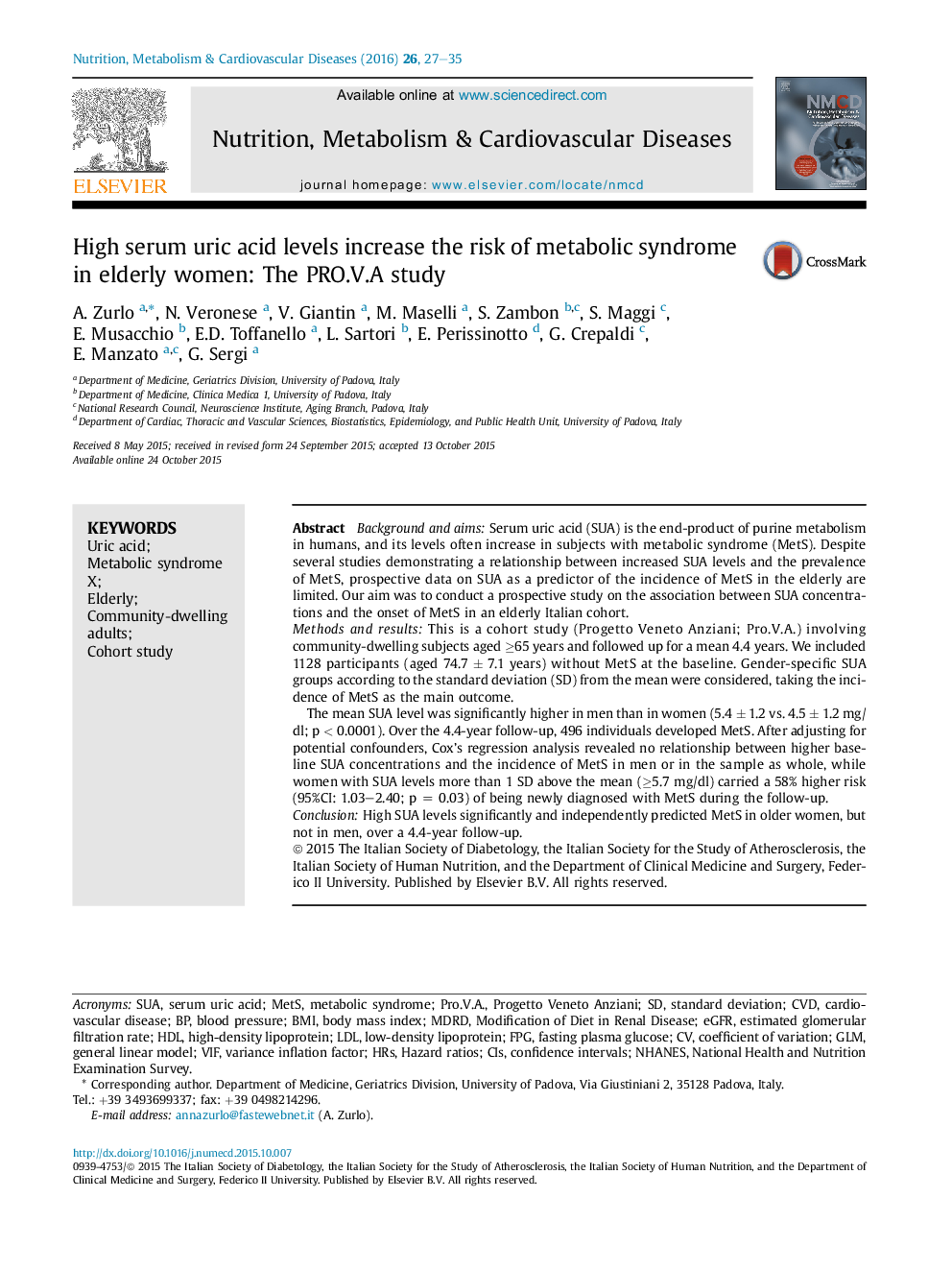| کد مقاله | کد نشریه | سال انتشار | مقاله انگلیسی | نسخه تمام متن |
|---|---|---|---|---|
| 5996493 | 1180674 | 2016 | 9 صفحه PDF | دانلود رایگان |

- We investigated the association between uric acid and risk of metabolic syndrome.
- We conduct a prospective study over a 4.4-year follow-up.
- It is the first such study to focus exclusively on the elderly.
- High uric acid levels significantly predicted metabolic syndrome only in women.
Background and aimsSerum uric acid (SUA) is the end-product of purine metabolism in humans, and its levels often increase in subjects with metabolic syndrome (MetS). Despite several studies demonstrating a relationship between increased SUA levels and the prevalence of MetS, prospective data on SUA as a predictor of the incidence of MetS in the elderly are limited. Our aim was to conduct a prospective study on the association between SUA concentrations and the onset of MetS in an elderly Italian cohort.Methods and resultsThis is a cohort study (Progetto Veneto Anziani; Pro.V.A.) involving community-dwelling subjects aged â¥65 years and followed up for a mean 4.4 years. We included 1128 participants (aged 74.7 ± 7.1 years) without MetS at the baseline. Gender-specific SUA groups according to the standard deviation (SD) from the mean were considered, taking the incidence of MetS as the main outcome.The mean SUA level was significantly higher in men than in women (5.4 ± 1.2 vs. 4.5 ± 1.2 mg/dl; p < 0.0001). Over the 4.4-year follow-up, 496 individuals developed MetS. After adjusting for potential confounders, Cox's regression analysis revealed no relationship between higher baseline SUA concentrations and the incidence of MetS in men or in the sample as whole, while women with SUA levels more than 1 SD above the mean (â¥5.7 mg/dl) carried a 58% higher risk (95%CI: 1.03-2.40; p = 0.03) of being newly diagnosed with MetS during the follow-up.ConclusionHigh SUA levels significantly and independently predicted MetS in older women, but not in men, over a 4.4-year follow-up.
Journal: Nutrition, Metabolism and Cardiovascular Diseases - Volume 26, Issue 1, January 2016, Pages 27-35